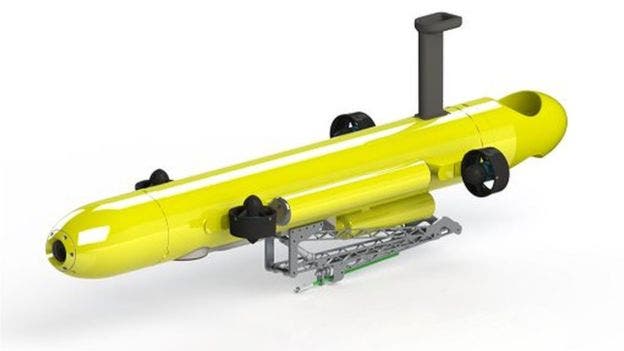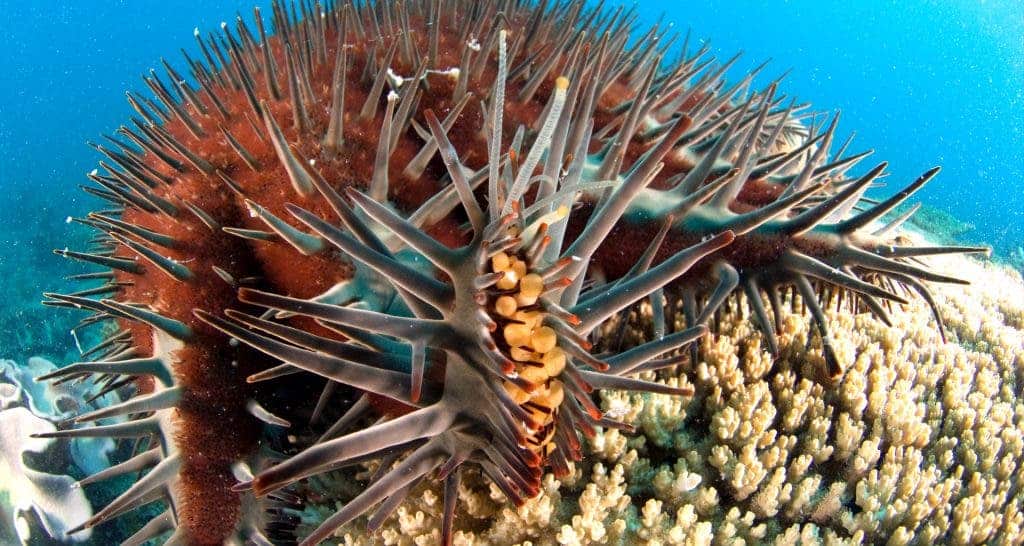Picture this:
A city under siege. Many of the outlying buildings are old, dry, lifeless shells of their former beauty as nearly 50 percent of the population is wiped out, consumed by ravenous invaders. And the only hope of lifting the siege lies with a poison injecting, yellow robot.
Awesome, we should make it into a movie
But we’re already doing much, much better; we’re making it a reality. The “city” is Australia’s Great Barrier Reef, plagued by an overpopulation of Acanthaster planci, or Crown-of-Thorns Starfish (COTS), a species that over the last 30 years has chummed down on nearly half of the Reef’s population of corral. But help is on the way, as scientists and engineers teamed together to create the ultimate in yellow starfish de-population technology, the COTSbot.

Image via bbc
The COTSbot, an autonomous underwater vehicle developed by Matthew Dunbabin and Feras Dayoub of the Queensland University of Technology, completed its first sea trials this week in Queensland’s Moreton Bay and is set to begin its grim work this December.
The bot lies on stereoscopic cameras for depth perception, pitch-and-roll sensors to keep it stable, and GPS systems to make sure it does not stray from it’s path of destruction. It also has a state-of-the-art computer vision system working in tandem with the cameras to identify targets.
The software was “trained” with thousands of still images of the reef and videos to help the robot recognize the starfish. If the robot is unsure whether an object is a COT starfish, it will snap an image of it and ask a human to confirm. A yes or no answer gets wrapped into the robot’s machine-learning algorithm so that it learns and advances its technique for ultimately finding the starfish without any human intervention.
But at the center of its instruments, and arguably the most fearful should one find himself in a particularly starfishy state, is a pneumatic injection arm designed to deliver a lethal dose of bile salts into the Crowns-of-Thorns. It can deliver more than 200 lethal shots in the eight hours it can stay submerged before its batteries give out.
“We see the COTSbot as a first responder for ongoing eradication programs — deployed to eliminate the bulk of COTS in any area, with divers following a few days later to hit the remaining COTS,” Dunbabin said in a press statement.
A little insight into the villains

Image via scienceinpublic
COTS are not usually an invasive species, and they’re not even native to the Reef. Scientists have a couple of theories for why the starfish population has exploded, but it seems to be a combination of fewer predators — thanks to fishing and shell collecting — as well as wastewater runoff, which increases plankton blooms that serve as food for crown-of-thorns starfish larvae.
Between now and December, the QUT roboticists will train COTSbot on living starfish at the Great Barrier Reef. It won’t inject the brine until a human allows it, but after training, COTSbot will be on its own.


